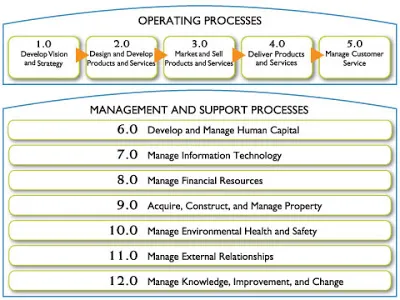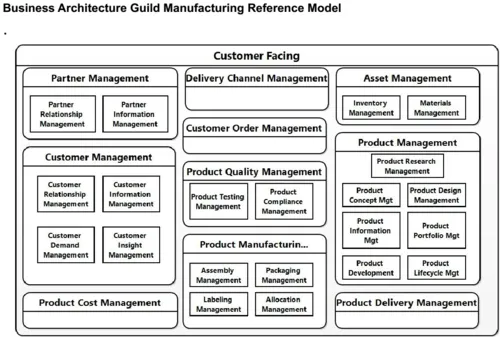Are BA Guild's Reference Models business architectures?
The Business Architecture Guild has provided a few reference models. The IRIS site is publishing them at
The Business Architecture Guild Manufacturing Reference Model
The Business Architecture Guild Finance Reference Model
The Business Architecture Guild Healthcare Reference Model
But how can we use the models or can we use them at all to model a Business Architecture (BA)? Here are my notes.
A question that comes first to mind is how do the models differ from the long available APQC's or other business process maps? In essence, they don't, except in the categorization itself. There seems to be little difference between the APQC reference process maps and the "Business Architecture reference models" of the BA Guild. APQC, equally, has reference models for industries.
For reference, here is a site describing the generic APQC map.
You can also download the original document from here. And, equally, APQC, has reference models for many industries.

While APQC calls the models process maps and their elements process categories, the BA Guild calls the models business architecture and their elements capabilities even though there is little distinction made between the two.
It looks more like renaming the "process", "capability", and "business process maps", "business architecture", perhaps in the desire to cover the more popular today architecture space. This is made possible though by the absence of more rigorous definitions for business/enterprise architecture and capability.
Anyway, the concept of "capability", first adopted in the IT EA camp, seems to have been adopted in the business process community only to overlap with the "process" paradigm, key so far in the business analysis and process management field.
But the approach may stir questions and divide the business process practitioner community.
Now, even if the BA Guild's models do look like architectures, since they show boxes in boxes on a page, they are not since there are no links/connections or exchanges between the boxes as in an architecture. In truth, the reference models are just a hierarchical list of entities just as the APQC process maps are.
Besides, the model boxes can hardly be seen as the nodes of a business architecture. The boxes do not exhibit a functionality that can be easily aligned to a technology application, platform or an organization function. One can hardly associate in practice the model entities to the components of an IT Enterprise Architecture (EA) or a real organization chart unit. As a consequence, it is difficult to include and align the Guild's reference model to a full Enterprise Architecture stack. Neither an organisation chart, nor a technology architecture look even remotely like the guild's reference models.
Also, the Guild's model entities can hardly be associated to capabilities. A capability can do a service to a stakeholder (or to another capability), that is, it may return value in the form of a processed part, product, processing... To achieve that, a capability consists of both processes and the physical resources that ultimately deliver the value. That is not the the case for a "business architecture". Without considering the resources that implement its function, a capability change can hardly be implemented. Then strategy mapping on capabilities, a primary purpose for capabilities, would hardly work.
Also, the deliverable should be clear from the naming of the capability. But too often the BA Guild's naming is as vague as an "... management". There does not seem to be a naming convention at work anyway.
It is also not clear how the so called "capabilities" work together to deliver the product or services to stakeholders because they are not often aligned to either value chains or streams that deliver services to stakeholders.
Anyway, to be able to deliver an outcome to the stakeholder, capabilities are not usually simple nodes of an architecture but typically consist of an ensemble of them.
In the end, it's hard to understand how to use the BA Guild's reference models except as another attempt at providing Process Maps under a trendy cover. The business analysts typically use that as a start list for documenting your business processes.
